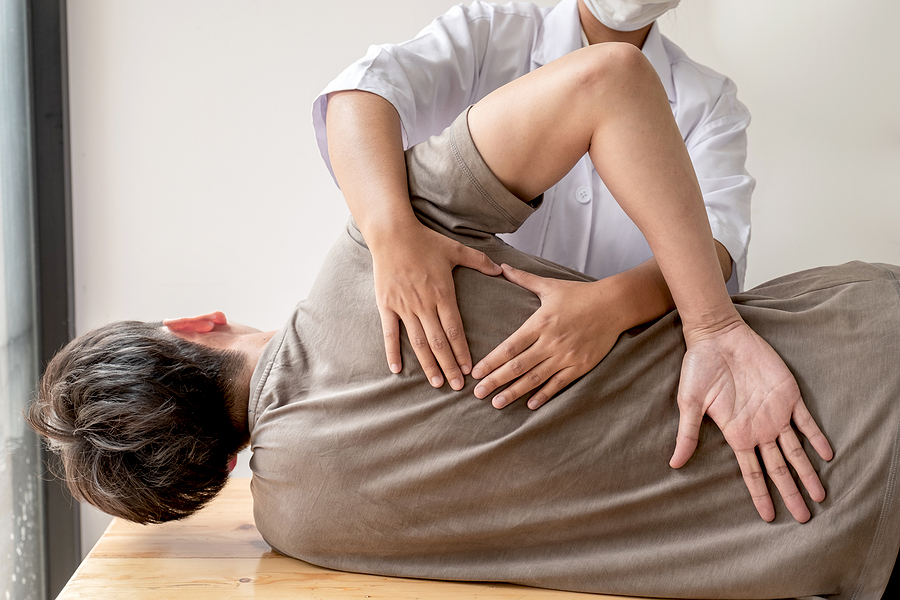Car, truck, or motorcycle accidents and slips and falls are the most common causes of acute and chronic back injuries.

Back pain affects nearly 65 million Americans in some form. Some of these cases can be blamed on bad habits like hunching over in office chairs or sleeping in odd positions. However, for a substantial number of car, truck, motorcycle accident or slip and fall victims, the source of pain is far more severe. Back injuries resulting from accidents don’t necessarily have a quick fix, and the side effects can impact every area of a person’s life.
Why Back Injuries are so Serious
One of the critical functions of the spine is sending signals between your brain and your body. When the spine is damaged, it can impact mobility, sensory abilities, and reflexes. When the nerves that guide bodily movement work unpredictably, you may experience muscle spasms. This can stop you from doing everyday necessities like walking comfortably and driving.
Depending on the extent of damage, a spinal injury can lead to partial paralysis or quadriplegia, paralysis that affects all limbs. In addition to limited mobility, paralysis impairs the body’s ability to regulate blood flow and breathing. It can also lead to organ damage and failure.
While the majority of back injuries don’t lead to paralysis, back injuries of all kinds have far-reaching effects. Among those who suffer chronic back pain in the United States, 80% are afflicted for a lifetime. Many have to manage their condition with strong medications. Some are unable to work because of the pain. Even the least physically demanding tasks, like sitting up to watch your favorite TV show, rely on the bones, muscles, and nerves in your back. The discomfort can be inescapable.
Acute Back Injuries
The best way to determine the type of back injury you have is to see a doctor for a diagnosis and treatment. However, learning about the different types of acute back injuries may give you a clearer idea of how to identify and explain your pain.
Sprain or Strain
Strains happen when muscles or tendons are twisted or stretched beyond their natural limits during an accident. Ligaments, the tissues that surround and protect joints, can also be overextended. That leads to sprains. Both strains and sprains can affect your range of motion. If you have a back sprain or strain, you may notice that bending over or stretching to reach an item from a shelf causes an uptick in pain.
Fracture or Dislocation
A fracture is the break of a bone. Any of the vertebrae, the 33 bones in your backbone, can become fractured. However, 64% of back fractures happen to the lower back. When vertebrae become misaligned or shifted out of place, it is called a dislocation. Vertebrae that aren’t in the proper place can injure the spinal cord. Fractures and dislocations often happen because of high-impact trauma to the spine. Impact from car accidents, sports, and falls from considerable heights are common ways people end up with these types of injuries.
Torn or Ruptured Disc
Each disc of the spine has a soft center, or nucleus, that absorbs shock. The outer layer of each disc keeps the soft, fluid-filled center in place. When a disc ruptures or tears, the liquid within the center can escape. Even though tears and ruptures aren’t typically life-threatening, they are usually painful. Since the spinal nerves are so sensitive, it can hurt when they come into contact with the leaked fluids. As nerve pain can radiate throughout the body, patients with damaged discs often feel it in their legs as well.
The process for getting a torn or ruptured disc diagnosed is also excruciating. It involves getting injections into the spinal discs so that medical professions can determine whether there is any leakage.
Nerve Compression
Nerve compressions happen because of excessive pressure placed on nerves. The 31 pairs of spinal cord nerves rely on protection from the backbones. But when the backbones aren’t strong, the nerves are vulnerable. Backbones can either sustain wear and tear over time with age or endure immediate damage in an accident, leading to nerve compressions. Those who suffer from nerve compressions often complain about feeling stiffness in their backs as well as pain or weakness in their arms and legs.
What Causes Acute Back Injuries?
Acute pain often results from sudden injuries to the ligaments, discs, and muscles that support the back. This can happen from trauma in practically every type of accident, including the force of a car accident and the impact of meeting the pavement after a slip and fall accident. For example, if you’ve experienced whiplash after a car accident, the damage to soft tissue likely led to the pain in your neck and upper back.
Contact a Back Injury Attorney
If you’ve been injured in an accident of any kind, through no fault of your own, speak with a personal injury attorney about your accident and back injuries. Experienced attorneys are familiar with what damages you’re entitled to receive compensation for, including coverage of your medical expenses and lost wages. The experts of Sand Law are committed to recovering the utmost amount that you need to restore your life. We have a proven process for investigating a case and negotiating with insurance companies for our clients. For a free consultation, contact us online or by phone at 651-291-7263.

